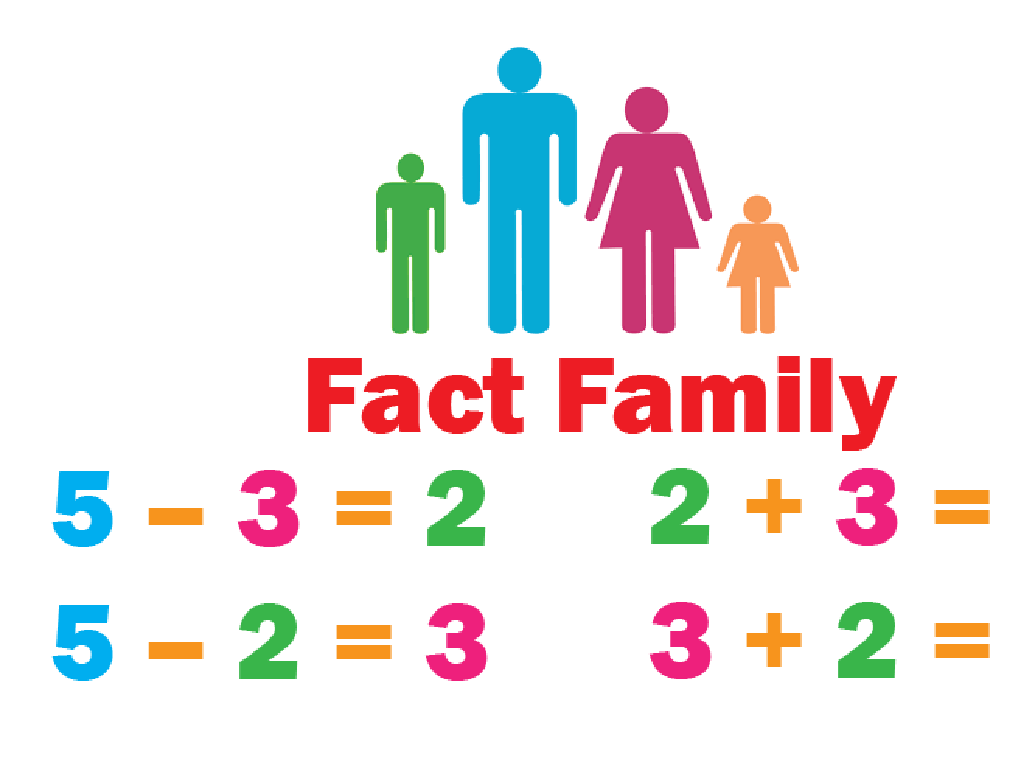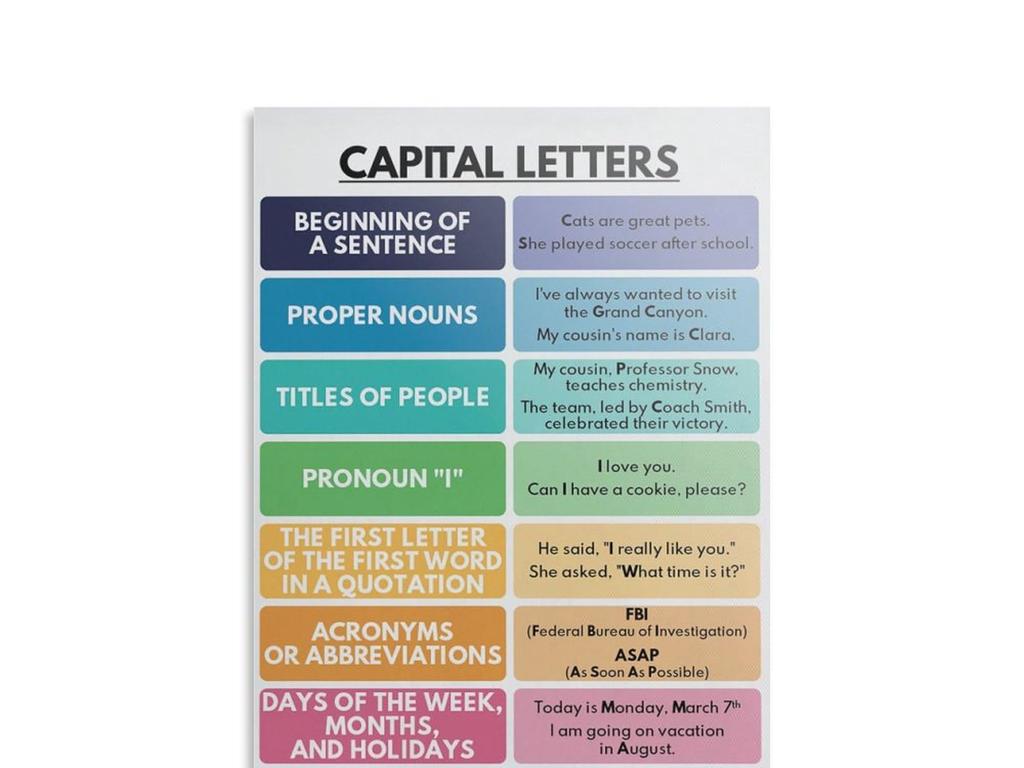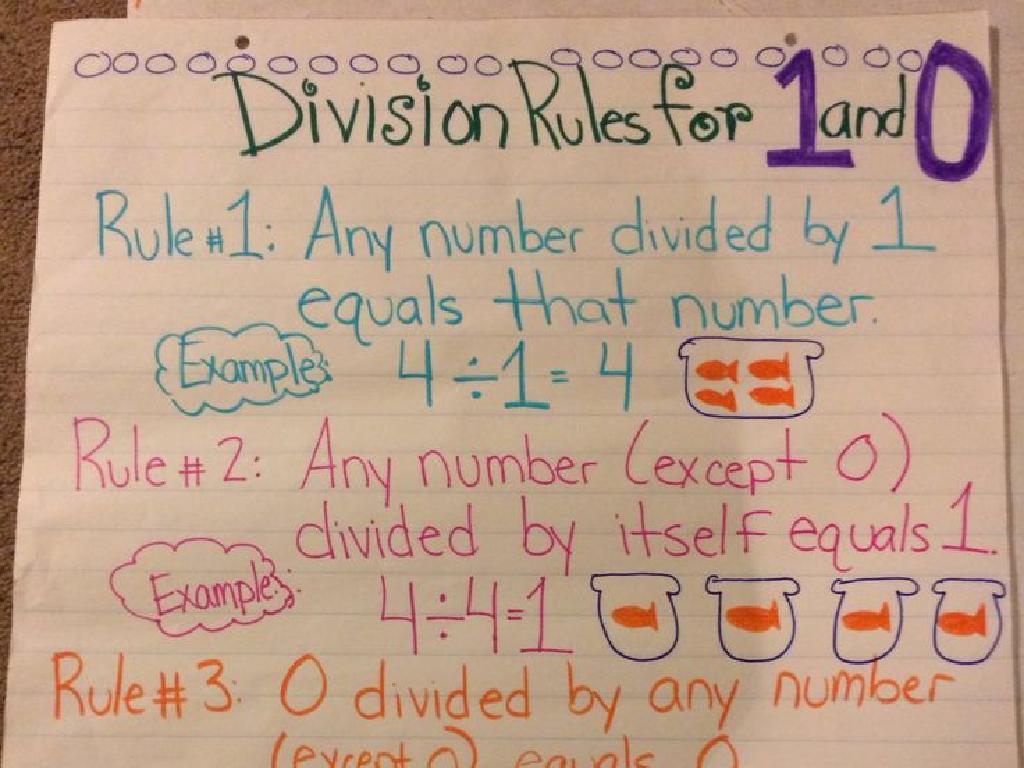Find Lengths And Measures Of Bisected Line Segments And Angles
Subject: Math
Grade: Seventh grade
Topic: Lines And Angles
Please LOG IN to download the presentation. Access is available to registered users only.
View More Content
Introduction to Lines and Angles
– Explore basics of geometry
– Define lines and angles
– Lines are straight with no curves, angles are formed when two lines meet
– Significance in geometry
– They are the foundation of geometric shapes and figures
– Bisecting lines and angles
– Bisecting creates two equal parts, important for symmetry and design
|
This slide introduces the fundamental concepts of geometry, focusing on lines and angles. Begin by explaining that geometry is the branch of mathematics concerned with the properties and relations of points, lines, angles, and surfaces. Define lines as straight one-dimensional figures that have no thickness and extend infinitely in both directions. Angles are formed when two lines intersect. The importance of lines and angles is paramount as they are the building blocks of all geometric figures and are essential in understanding the properties and relationships of shapes. Introduce the concept of bisecting lines and angles, which is the process of dividing them into two equal parts, a concept that will be crucial for understanding more complex geometric principles. Encourage students to think about where they see lines and angles in their daily lives to make the topic more relatable.
Exploring Types of Angles
– Identifying angle types
– Angles are categorized by their measure
– Acute, Obtuse, Right, Straight
– Acute: 90° and < 180°, Right: = 90°, Straight: = 180°
– Real-life angle examples
– Acute: tip of a slice of pizza, Obtuse: hands of a clock at 10:10, Right: corners of a book, Straight: edge of a ruler
– Angle type applications
|
This slide introduces students to the fundamental concepts of angles, which are the building blocks for understanding geometry. Start by defining what an angle is and then explain the different types of angles based on their measures. Provide real-life examples for each type of angle to help students visualize and relate to the concepts. Acute angles can be seen in the tips of slices of pizza, obtuse angles in the hands of a clock, right angles in the corners of books, and straight angles along the edges of rulers. Encourage students to find and measure angles in their environment for a practical understanding. This will prepare them for learning how to bisect these angles and calculate their measures in real-world contexts.
Exploring Bisected Line Segments
– Definition of bisected lines
– A line segment divided into two equal parts at its midpoint.
– Steps to bisect a segment
– Use a compass and straightedge to find the midpoint and draw a line.
– Properties of bisected segments
– Each segment is equal in length, and the midpoint is equidistant from both endpoints.
– Bisected lines in geometry
|
This slide introduces the concept of bisected line segments, which is fundamental in understanding geometry. A bisected line segment is split into two equal parts at its midpoint. To bisect a line segment, students can use a compass to draw arcs from each endpoint and a straightedge to draw the bisecting line through the intersection of the arcs. Emphasize that the properties of bisected line segments include two segments of equal length and that the midpoint is the same distance from each endpoint. This concept is a building block for understanding more complex geometric constructions and theorems. Encourage students to practice bisecting line segments and to explore how this concept applies to various geometric shapes.
Exploring Bisected Angles
– Definition of angle bisection
An angle bisector is a ray that divides an angle into two congruent angles.
– Steps to bisect an angle
Use a compass and straightedge to divide the angle into two equal parts.
– Properties of bisected angles
Each angle is half the measure of the original angle.
– Practical applications
|
Begin with explaining what an angle bisector is and its significance in geometry. Demonstrate the process of bisecting an angle using a compass and straightedge, which is a fundamental skill in geometric constructions. Emphasize the properties of bisected angles, particularly that they are equal in measure, which is a critical concept when solving geometric problems. Discuss practical applications, such as in design and engineering, where precise angle measurements are crucial. Encourage students to practice bisecting angles and to explore real-world examples where angle bisection is applied.
Finding Lengths of Bisected Line Segments
– Understanding the midpoint formula
– The midpoint formula is (x1+x2)/2, (y1+y2)/2 for the midpoint of a line segment.
– Example: Calculating segment lengths
– If a line segment has endpoints (2,3) and (4,5), find the length of each bisected part.
– Engage with a class practice problem
– Discuss solutions and methods
|
This slide introduces the concept of finding the lengths of bisected line segments using the midpoint formula. Start by explaining the midpoint formula and how it can be used to find the exact middle point of a line segment on a coordinate plane. Provide a clear example with coordinates, showing step-by-step how to apply the formula. Then, move on to a practice problem that the class can solve together, ensuring to engage students in the process. After solving the problem, discuss the solution and the methods used, reinforcing the concept and addressing any misunderstandings. Encourage students to ask questions and to try creating their own problems for additional practice.
Finding Measures of Bisected Angles
– Understanding angle bisectors
– An angle bisector divides an angle into two equal parts.
– Example: Calculating bisected angles
– If a 60° angle is bisected, each new angle measures 30°.
– Class practice problem
– Solve a bisected angle problem together.
– Review and discuss solutions
– Go over the practice problem, ensuring comprehension.
|
Begin the lesson by explaining the concept of an angle bisector and its properties, emphasizing that it creates two congruent angles. Use a clear example, such as bisecting a 60° angle, to demonstrate how to calculate the measure of the newly formed angles. Engage the class with a practice problem, encouraging them to apply the concept of angle bisectors to find the measures of bisected angles. After the activity, review the solutions as a class to reinforce understanding and address any misconceptions. Provide additional examples if needed and encourage students to ask questions throughout the lesson.
Class Activity: Bisecting Lines and Angles
– Gather materials: ruler, compass, protractor, pencil, paper
– Bisect a line segment step-by-step
Use a ruler and compass to find the midpoint and draw a perpendicular bisector
– Bisect an angle step-by-step
Use a compass and protractor to divide the angle into two equal parts
– Measure and record the bisected lines and angles
Use a ruler and protractor to measure the lengths and angles accurately
|
This activity is designed to provide hands-on experience with bisecting lines and angles. Students will use a ruler and compass to bisect a line segment, ensuring they understand how to find the exact midpoint and draw a perpendicular bisector. For bisecting an angle, they will use a compass to mark equal arcs from the vertex and then draw the bisected angle using a protractor. After completing the steps, students should measure their results with a ruler and protractor and record their findings. Possible variations of the activity could include bisecting different types of angles (acute, obtuse, right) or using string instead of a ruler for measuring. Encourage students to discuss any challenges they faced during the activity and how they overcame them.
Review and Q&A: Bisected Lines and Angles
– Recap: Bisecting lines and angles
– Review how to find lengths and measures of bisected lines and angles.
– Open floor for student questions
– Real-world application discussion
– Discuss practical examples like architecture and design.
– Homework: Find bisected examples
– Look for bisected lines or angles at home or in your environment.
|
This slide aims to consolidate the students’ understanding of bisected lines and angles. Begin with a brief review of the key concepts, ensuring that students can find the lengths and measures of bisected line segments and angles. Open the floor to questions, encouraging students to clarify any doubts. Transition to a discussion on how these geometric concepts apply to real-world scenarios, such as in construction, art, and nature, to help students see the relevance of what they’ve learned. Conclude with a homework assignment that prompts students to observe and find examples of bisected lines and angles in their daily surroundings, reinforcing their ability to identify and analyze these concepts outside the classroom.
Homework: Bisecting Lines and Angles
– Practice bisecting lines and angles
– Complete the bisected lines and angles worksheet
– Worksheet includes various problems to solve
– Review for the upcoming quiz
– Quiz will cover all topics discussed in class
– Understand the concept of bisection
– Bisection means dividing into two equal parts
|
This homework assignment is designed to reinforce the concepts taught in class about bisecting lines and angles. Students should practice the technique of bisecting to gain confidence. The provided worksheet will contain problems that require students to apply their knowledge and find lengths and measures of bisected line segments and angles. Encourage students to review their class notes and textbook to prepare for the quiz. The quiz will assess their understanding of all the topics covered under lines and angles. Remind students that bisection is a fundamental concept in geometry that they will use in various mathematical applications.






